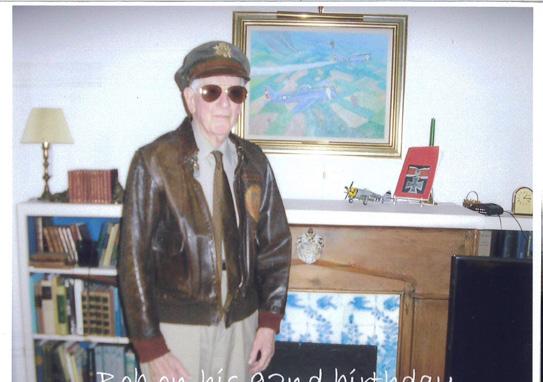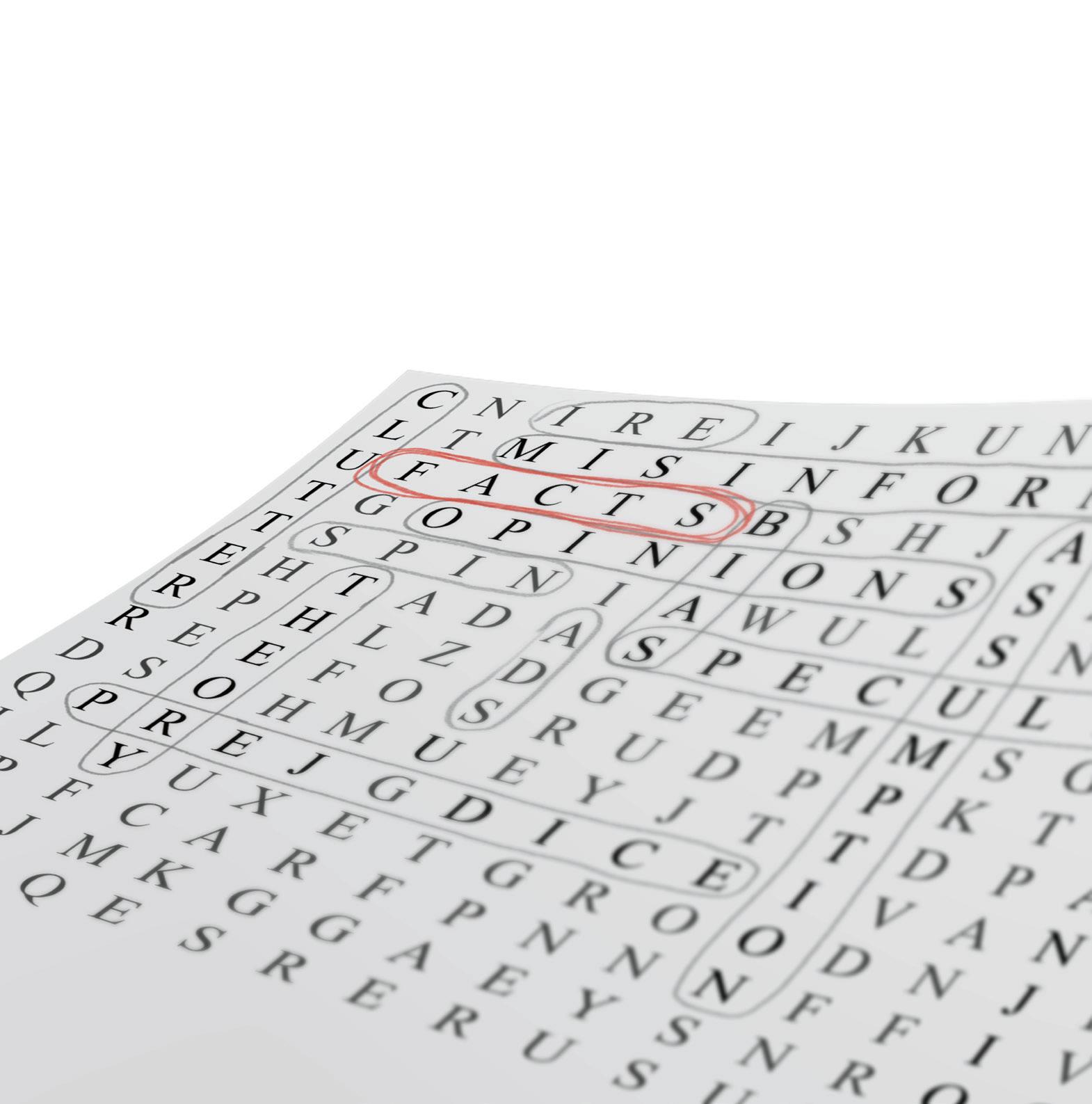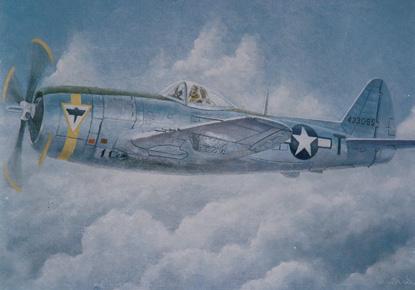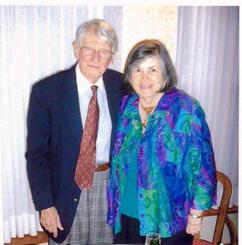
7 minute read
On Love and War and Writing
A Q&A with author Robert Huddleston, 96, about his new World War II historical fiction (a lot of action with a dash of romance) novella
Carolina Meadows’ Robert Huddleston’s new historical novel is based on Bailey, a Carolina Meadows neighbor his experiences as a fighter pilot in the European Theater of Operations during World War II. (who edited the Princeton [University] Born three years before Charles Lindbergh made his cross-Atlantic solo flight, Robert credits the flying aces of World War I and Lucky Lindy as his inspirations to learn to fly, with an added motivation (see below) to becoming a fighter pilot. Press for 40 years), who urged me to try my hand at fiction.
His new book – “Love and War,” available on Amazon (Paperback, $8.95; hardcover, $21.95; E-book, $4.50) – spans events from the First World War through the end of World War II. Robert and his wife, Pepita, moved to Chapel Hill in 1999, “[W]hen we found Pennsylvania too cold for two elders. We were retired, though I presented myself as a Let’s talk about your book. “Love and War” traces two connected freelance [but unpaid] writer. We purchased a house in Columbia Place just off what families from WWI through WWII, was then Airport Road. It was a good investment, and we sold it in 2004 when we moved to Carolina Meadows.” The following is a lightly edited transcript of an email conversation between Robert and and without spoiling anything, is it based on your life? Every chapter Chapel Hill Magazine’s Dan Shannon. in some way relates to my experience should have been labeled a and/or my reading and hearing. I simply [tied] it all together using my This is your first full-length we are born with that has ghosts novel, correct? Why did you in our bedroom and bad persons decide to write it? I think due under our bed. But, as adults, it can to its brevity, “Love and War” produce serial novelists! imagination. You know, that “thing” novella – my second, in fact. In You served as a fighter pilot in the 2014 I published the fictional waning days of WWII, completing “An American Pilot with the 36 combat missions. Thank you Luftwaffe.” It was favorably for your service. What drove you reviewed in Air Power History to become a fighter pilot in the [magazine]. war? The smart-ass answer: Girls! [The reason I finally wrote it in It’s difficult to find glamour in war, my mid-90s] was a fellow pilot, Captain Floyd Blair – but the public laid it on for fighter he and I and one other pilot, who is now 100-plus-years-old, are the last pilots – they were called the “Knights of the Air” in WWI, and in known of our group to be alive – liked the short stories I had written WWII, the public idolized fighter pilots in the U.S. Army Air Corps over the years and urged me to write a novel. And it was the late Herb and British RAF [Royal Air Force], even the German Luftwaffe (the

latter having the best-looking uniforms). Among my friends, of the many who tried, just three received the coveted silver wings: one a P-61 pilot (a night fighter), another a P-51 Mustang pilot who became an “ace” with six aerial victories, and yours truly, a P-47 Thunderbolt pilot used mainly in support of ground forces.

I’m guessing Ernie Brown, the dashing pilot in the book, who, like you, flew P-47 fighter-bombers, is
based on someone you knew? Yes, the [fictional] Ernie Brown was based on the first CO [commanding officer] of my unit, Carroll McColpin, who had been a squadron CO with the RAF in units of American pilots called Eagle Squadrons. He and I flew P-47s in combat, but I had [Ernie] serving with the British RAF before Pearl Harbor. Ernie had to be born in 1920 to pull that off. And when those American RAF pilots transferred to the U.S. Eighth Air Force in September 1942, they flew P-47s before receiving P-51 long-range fighters. As an aside, one American Eagle married an English aristocrat, and Pepita’s father’s second wife was a German princess! How long did you serve? I was separated from active duty in January 1946, but remained in the Air Force Reserve, promoted to captain and discharged from the reserves in 1957.
At the end of the war, your service took an interesting turn that led to your being involved in the dismantling of
the German V-2 rocket program. At VE [Victory in Europe] Day, May 8, 1945, my unit, the 404th Fighter Group, occupied a former Luftwaffe base near the border of what would be the Soviet Occupation Zone. Not surprisingly, the U.S. military coveted German advanced military hardware and research documents. Our Air Force wanted anything connected to jet aircraft and rockets [the Germans had] in production or planned. With the Soviets due to move in [very soon], there was little time to locate what was coveted and move it to the American Zone of Occupation. I volunteered.
Then what happened? I was assigned a Jeep, a driver, a sergeant armed with a machine gun, and a young Dutch student who had been forced to work for the Germans. Operating out of a small German city in the Soviet Zone, [we conducted] “Operation Lusty” (Luftwaffe
CounterPanes the Beautiful Baby Blanket from Scarffish
2020

Shop our New website at shopwhilden.com
400 S. ELLIOTT RD. • CHAPEL HILL • 919.240.5491 SHOPWHILDEN • SHOPWHILDEN.COM super soft • ridiculously colorful • totally washable


Made by hand in Chapel Hill, NC scarffish.square.site • thescarffish
Secret Technology). I was issued a top secret document listing what was coveted. My assigned area was in and around the city of Nordhausen and included the nearby underground factory producing the V-2 ballistic missiles launched against London from September 1944 to VE Day.
I went in not knowing much about Nordhausen and the underground [rocket] factory. What [I] found was it held thousands of dead and dying slave laborers from the underground rocket factory that Dr. Wernher von Braun and his civilian plant manager, Arthur Rudolph, had procured from the Buchenwald concentration camp. [We] collected [about 100 German rockets] and shipped them to an army facility in New Mexico that became the White Sands Missile Range. Dr. Von Braun and 100 of his Nazis and ex-SS officers soon followed.
Note: In 2011, triggered by the myth that Dr. Von Braun was a decent and honorable German forced to serve Adolf Hitler, I published a history play, “Exploitation.” I had hoped that high schools would perform the play but none, to my knowledge, did.
After the war you had a career with NASA and then on to another
federal agency. In December 1967, I transferred from NASA to the General Services Administration, an agency that included the National Archives, where I became involved in recruiting a director for the [President] Johnson Presidential Library. Under [President] Nixon, however, the GSA was corrupted, with government grants and contracts only going to those who would support his re-election.
I was disgusted, and subsequently published an [anonymous] article in the weekly Federal Times and soon after retired on a reduced pension during a “downsizing” at GSA. The Federal Times invited me to contribute an op-ed column, and I agreed to contribute two per month, an arrangement that lasted from 1975 to 1985 [and] enabled me to improve as a writer.

Tell me a little about your freelance writing
career. I first became a book review editor for an obscure journal that was unable to find reviewers, so I took to the task, only reviewing books that interested me – such as “Management and Machiavelli.” That was back in the late 1960s, and I am still at it reviewing books for Air Power History, The University Bookman and the History News Network.
Final question: Do you have any more books in the planning
stages or coming out? No more books; eyes too bad! CHM

FINE GIFTS, CUSTOM STATIONERY, FURNISHINGS & INTERIOR DESIGN

SOUTHCHAPELHILL.COM 107 MEADOWMONT VILLAGE CIRCLE CHAPEL HILL, NORTH CAROLINA 919.240.5475










